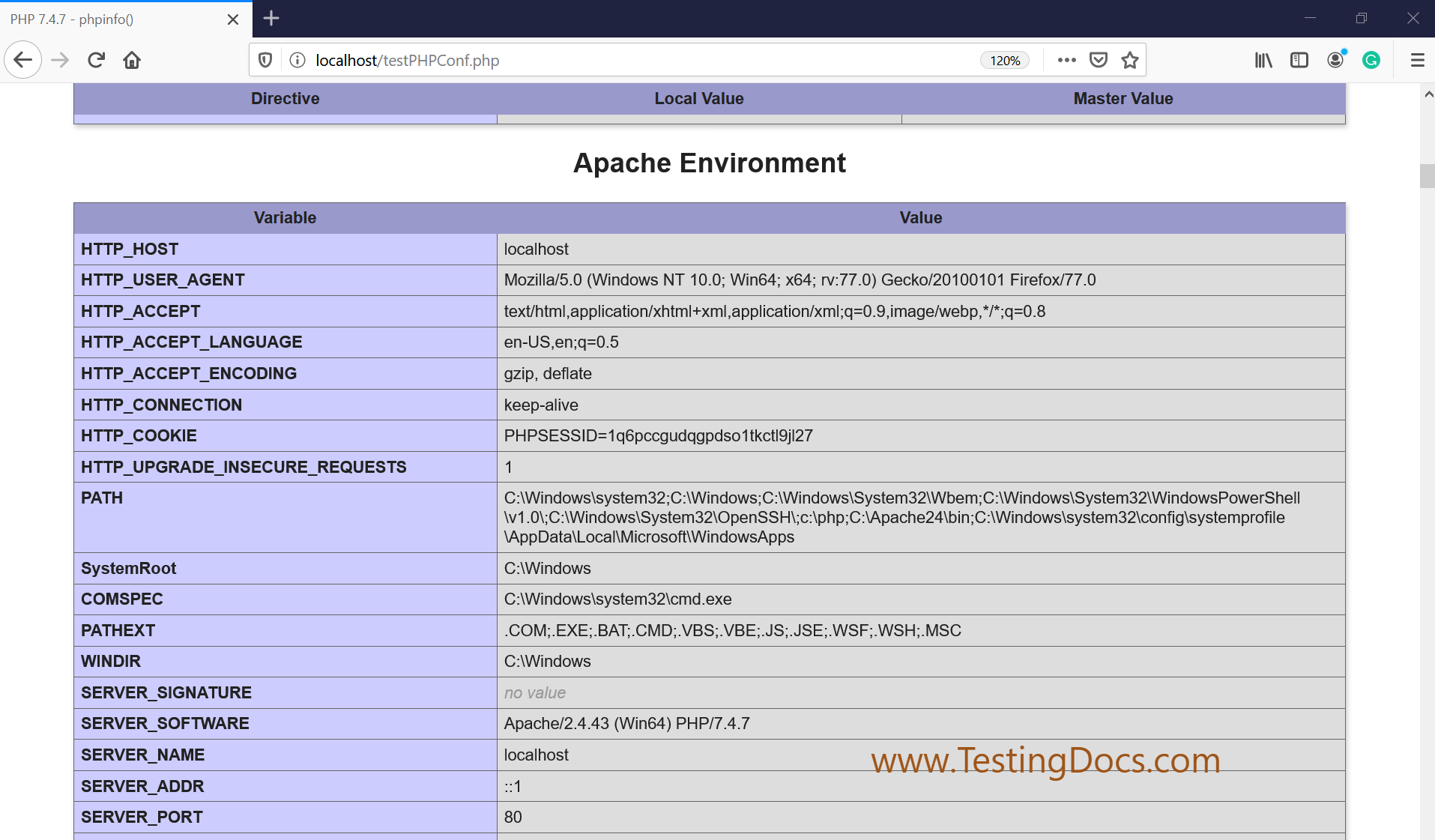

But we have at our disposal many constants we can define to enable features, customize and secure the installation. So far the analysis has been limited to the basic configuration. Note: it’s a good practice to backup WordPress files and database even if you will change the table prefix with a plugin.
#Sample php file install
If you don’t have access to the database or you don’t have the required knowledge to build custom queries, then you can install a plugin like Change Table Prefix that will rename database tables and field names, and update the config file with no risk. To change table prefix in a working website, you should run several queries against the database, then manually edit the wp-config.php file. Unfortunately, anyone knows its default value and this could open WordPress database to a vulnerability, which can be easily fixed by setting a custom value for $table_prefix when running the set-up. $table_prefix variable stores the prefix of all WordPress tables. For better security, consider to use the online generator. When you run the installation WordPress will automatically generate security and salt keys, but you can change them anytime, adding any arbitrary string.

*/įirst, come the definitions of database constants you should have received from your host:įollowing database details, eight security keys will make the site more secure against hackers. And we should never add contents under the following comment line: /* That's all, stop editing! Happy blogging. Note: constant definitions and PHP instructions come in a specific order we should never change. When you’re done, upload your file into the root folder and run WordPress. In this situation, you should create an empty wp-config.php file, copy and paste content from wp-config-sample.php, and set the proper values to all defined constants. Usually, this file is automatically generated when you run the set-up, but occasionally WordPress does not have privileges to write in the installation folder. * That's all, stop editing! Happy blogging. */ĭefine('AUTH_KEY', 'put your unique phrase here') ĭefine('SECURE_AUTH_KEY', 'put your unique phrase here') ĭefine('LOGGED_IN_KEY', 'put your unique phrase here') ĭefine('NONCE_KEY', 'put your unique phrase here') ĭefine('AUTH_SALT', 'put your unique phrase here') ĭefine('SECURE_AUTH_SALT', 'put your unique phrase here') ĭefine('LOGGED_IN_SALT', 'put your unique phrase here') ĭefine('NONCE_SALT', 'put your unique phrase here')

** Database Charset to use in creating database tables. ** The name of the database for WordPress */ Here is a basic wp-config.php file: // ** MySQL settings - You can get this info from your web host ** // When you run the set-up, you will be required to input data that is stored in the wp-config.php file But when you’re manually running the 5-minute install, you will be asked to input some of the most relevant data stored into wp-config. Sometimes your host will set up WordPress for you, and you won’t be required to manually run the set-up. When you first install WordPress, you’re asked to input required information like database details and table prefix. Features for Developers: Debug Mode and Saving Queries.Over Basic Configuration: Editing the File System.The wp-config.php file stores data like database connection details, table prefix, paths to specific directories and a lot of settings related to specific features we’re going to dive into in this post. It resides in the root directory and contains constant definitions and PHP instructions that make WordPress work the way you want. One of the most important files of a WordPress installation is the configuration file.


 0 kommentar(er)
0 kommentar(er)
